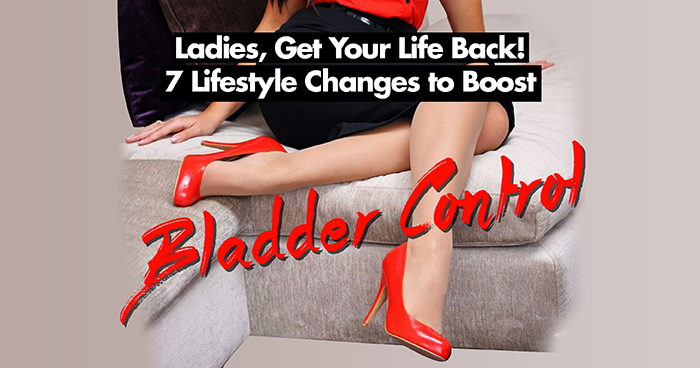Anyone suffering from a bladder problem knows that it is both uncomfortable and embarrassing. Too often, women assume their bladder issues will resolve over time, but this is typically not the case. Time only makes matters worse; thus, it is imperative you understand the ramifications for not treating your bladder problem early.
A bladder control issue, or urinary incontinence, is defined as the recurrent leakage or loss of bladder control. Millions of women around the world suffer from bladder control.
It is common, and there is hope for anyone suffering from the symptoms associated with bladder control issues.
Sometimes, there are simple solutions to your bladder control issues. Here are seven ways to help increase your bladder’s function and potentially alleviate any troubling symptoms:
1. Monitor Your Fluids
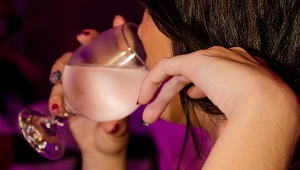 Too much or too little amount of fluid can affect your bladder functioning. Too much fluid can cause you to have to urinate too frequently.Drinking too much liquid in a short amount of time can overload the bladder and create a dire sense of urgency. Heavy exercise or outdoor activity can be reason to drink more fluids, which in turn can cause more urination.
Too much or too little amount of fluid can affect your bladder functioning. Too much fluid can cause you to have to urinate too frequently.Drinking too much liquid in a short amount of time can overload the bladder and create a dire sense of urgency. Heavy exercise or outdoor activity can be reason to drink more fluids, which in turn can cause more urination.
Instead of drinking a large amount at one time of the day, do your best to drink smaller amounts multiple times throughout the day. It is best to drink approximately two eight-ounce glasses with every meal, and one eight-ounce glass of water between meals.
If you can drink this amount of fluid every day in water, then you will eventually intake the recommended eight cups of water a day.
 Water is the best fluid for your bladder, but remember that fluid is also present in many foods that you may not expect, such as fruit and soup. If you find that you are waking up too often during the night, then try to drink your water earlier in the day.
Water is the best fluid for your bladder, but remember that fluid is also present in many foods that you may not expect, such as fruit and soup. If you find that you are waking up too often during the night, then try to drink your water earlier in the day.
If you are drinking too little fluid throughout the day, this can also be an issue. You will know if you are not drinking enough fluid by the color of your urine. Urine dark in color is lacking fluid. This type of urine is painful for the body and causes irritation. Your urine should be clear or slightly tinted yellow, but not orange or darker.
2. Ensure You’re Not Being Irritating
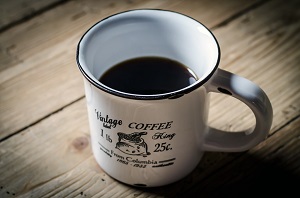 Just like nails on a chalkboard, there are a few irritants that your bladder would love for you to stop consuming. Some food and drinks contain various ingredients or nutrients that might be causing irritation to your bladder.
Just like nails on a chalkboard, there are a few irritants that your bladder would love for you to stop consuming. Some food and drinks contain various ingredients or nutrients that might be causing irritation to your bladder.
Caffeine and alcohol both irritate the bladder and cause an increase in the urge to urinate. Caffeine in particular is known for causing bladder spasms.
 Some foods, fruits in particular, are very acidic and irritate the bladder. Oranges, grapefruits, limes, fruit juices, spicy foods, carbonated beverages, corn syrup, coffee and tea can all irritate the bladder and cause irritation.
Some foods, fruits in particular, are very acidic and irritate the bladder. Oranges, grapefruits, limes, fruit juices, spicy foods, carbonated beverages, corn syrup, coffee and tea can all irritate the bladder and cause irritation.
Scientists have not yet determined why this is the case. But, it is highly advisable to avoid these foods and beverages if you are experiencing bladder control issues.
3. Train Your Bladder
Yes, you read that correctly. You can actually train your bladder to be a little more reliable. The issue begins with the overactive bladder. Once you have an overactive bladder, you begin visiting the bathroom, even when you don’t need to. Once that starts, your brain begins to associate these signals with having to use the bathroom, so you are stuck with the consistent, compelling urge to urinate.
 While this can be very frustrating, there are actually ways that you can work to stop this vicious cycle. Simply adjust your habits. Set a schedule to use the toilet, even if you have no urge at the time. Little by little, increase the amount of time between urinating. This retraining schedule will help your body fall into a new rhythm.
While this can be very frustrating, there are actually ways that you can work to stop this vicious cycle. Simply adjust your habits. Set a schedule to use the toilet, even if you have no urge at the time. Little by little, increase the amount of time between urinating. This retraining schedule will help your body fall into a new rhythm.
The key to establishing a bladder-training program is to first identify your urinating patterns. It helps to keep a diary and write the times that you are urinating. This might seem silly, but this will help you figure out your regular patterns. Once you have the patterns understood, you can begin to increase the amount of time between urinating.
Begin with extending the time by 15 minutes. For example, if you usually urinate at 12 noon everyday, and then at one in the afternoon, then try urinating at noon and then at 1:15 that day. Eventually, your body will become accustomed to the new urinating schedule.
4. Workout To Better Your Bladder
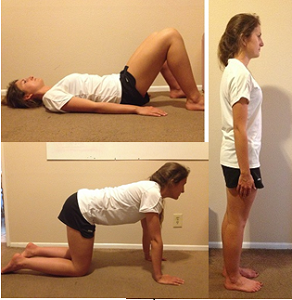
The muscles in your pelvis work to control urinating. If you work to strengthen these muscles, then your body is able to control your bladder better.
These exercises are kegels. Kegel exercises work to strengthen the urethra, which is the opening that allows urine to leave the bladder and exterior of the body.
You can perform these exercises everyday, even at work at a desk or while driving your car. All you have to do is simply squeeze the muscles in your pelvis. If you are unsure of where these muscles are located, then practice the next time you pee. Seriously. The next time you are urinating, stop your flow, and pay attention to the muscles used to stop your urinating. These are your Kegel muscles.
Whenever you are comfortable, perform a few sets of squeezing these muscles. Approximately one to two sets of 10 a day will help your pelvic muscles strengthen. Did we mention that these can also help your sex life?
5. Watch Your Weight
 Scientists believe that excessive body weight is directly related to bladder control problems. There are different kinds of incontinence, and stress incontinence is quite common.
Scientists believe that excessive body weight is directly related to bladder control problems. There are different kinds of incontinence, and stress incontinence is quite common.
This is because excessive body weight puts a large amount of pressure on the abdomen and bladder, in particular. This pressure can cause consistent urges to pee and even leakage.
Monitoring your diet is important to helping your bladder control issue. Losing weight might not be what you had in mind. But, it is practically guaranteed that your bladder control issue will better itself if you lose a few pounds. Start by watching what you eat. Consume a balanced diet everyday that includes fruit, vegetables, whole grains and protein. Stay away from junk food, drink plenty of water, and you are sure to feel healthier in no time.
6. Manage Your Medications
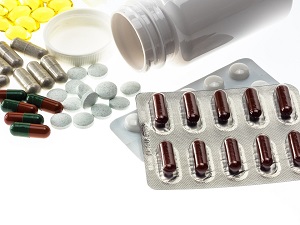 Unfortunately, medication that is helping one ailment might be causing other bladder control issues.
Unfortunately, medication that is helping one ailment might be causing other bladder control issues.
These medications include high blood pressure medications, heart medications, various diuretics, some muscle relaxants, sedatives and certain antidepressants.
These medications also might be causing constipation. Many different medications have constipation listed as a side effect. The worst part is that some of these medications work to help treat bladder, yet ironically, they sometimes make issues worse.
If you are experiencing any bladder control issues, then examine your medications first. This fix might be the most simple of all of them to correct.
7. Female Changes Will Affect Your Bladder
 As if the female body does not experience enough change, various female life events can affect bladder control. Both pregnancy and childbirth can affect bladder control.
As if the female body does not experience enough change, various female life events can affect bladder control. Both pregnancy and childbirth can affect bladder control.
Because babies typically place pressure on their mother’s bladder, the pressure weakens the pelvic area thus causing bladder issues.
Similarly, childbirth also affects bladder control. Women commonly leak after giving birth, and labor and childbirth in general can weaken the pelvic area. However, if pregnancy and childbirth are the causes for bladder control issues, then they should subside within six weeks. If not, then another cause is probably the culprit.
Incontinence is generally associated with aging in elderly women. This is because during menopause, the body stops producing estrogen. This loss in estrogen is directly related to weakened urethras, which in turn allows for a loss in bladder control.
Know Your Type Of Incontinence
Sometimes, the solution will depend on the type of incontinence you are experiencing. Here are the different types of incontinence:
-

Photo by Ash Photoholic / CC BY Stress Incontinence: This type of incontinence occurs when the muscles around the bladder are strained. Laughing, coughing, or even bending over can cause such straining.
Weakness in the pelvic muscles can also cause this type of incontinence. This is the most frequent type of incontinence in women, and is commonly associated with pregnancy and childbirth.
- Urge Incontinence: This is the overactive bladder that everyone usually thinks of when they hear about bladder control issues. Noted as the uncontrollable urge to pee, this type of incontinence is also common. It is usually prevalent in both men and women.
- Mixed Incontinence: This is a mixture between stress and urge incontinence. Both symptoms are present.
- Overflow Incontinence: When you collect urine in your bladder due to a weak or ineffective bladder, then it will have a tendency to dribble out. Low force urine, straining, hesitancy, and urgency are all symptoms of overflow incontinence.
 It is important to note that bladder control issues are not evident in children who are potty training. Younger children do not necessarily experience incontinence in the way that adults do. Also, bladder control issues are not genetic. Just because a parent or relative experiences bladder issues does not necessarily mean that you will.
It is important to note that bladder control issues are not evident in children who are potty training. Younger children do not necessarily experience incontinence in the way that adults do. Also, bladder control issues are not genetic. Just because a parent or relative experiences bladder issues does not necessarily mean that you will.
Bladder issues can make sex an uncomfortable task for suffering women. If you are a woman looking for a solution to your low sex drive and vaginal dryness, then try a reputable company such as www.HerSolution.com for your pelvic needs.
Hersolution offers a natural yet effective option for any woman looking to boost her libido, pelvic and sexual functioning and sexual desire.
Do not suffer in silence over your bladder control issues. Millions of women are suffering, and the solution might be as simple as a new medication or a simple diet change.
